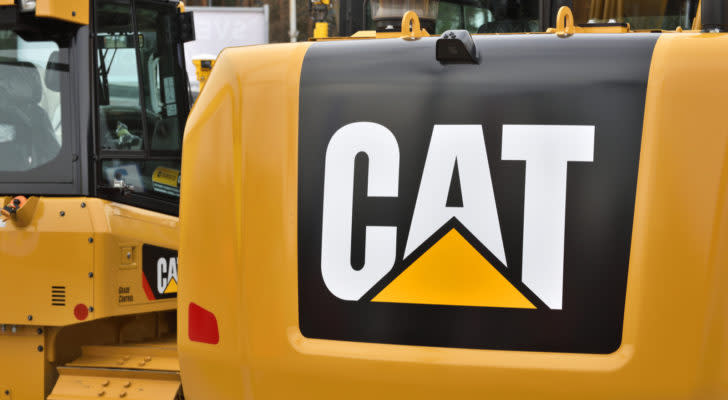3 Dividend Aristocrats Ready to Outperform the S&P 500
I saw an article from Seeking Alpha at the beginning of August that ranked all the Dividend Aristocrats by total return potential. In addition to the top Dividend Aristocrats, it also ranked Dividend Champions and Dividend Kings.
Dividend investors certainly would have been attracted to such an article. In total, 133 stocks were ranked by their long-term total return potential.
And while I appreciate the effort made by the author to recommend the best dividend stocks for the long haul, it’s a bit of a fool’s errand to think that they can narrow the list down to a manageable few based on any fundamental analysis.
InvestorPlace - Stock Market News, Stock Advice & Trading Tips
Stocks are going to do what they’re going to do. Not even Warren Buffett can successfully determine whether Apple’s (NASDAQ:AAPL) long-term total return will be higher than other stocks in Berkshire Hathaway’s (NYSE: BRK-A, NYSE:BRK-B) top 10 holdings.
To select three Dividend Aristocrats ready to outperform the S&P 500, I’ll pick one in the top 10 by weighting, one between 11 and 20, and one between 21 and 30.
Caterpillar (CAT)

Source: astudio / Shutterstock.com
Caterpillar (NYSE:CAT) is most definitely a cyclical stock. When the economy suffers, so do its customers, leading to lower revenues and profits. It’s a fact of life in the heavy equipment game. The vehicles CAT produces don’t come cheap.
Since June 2005, Caterpillar has had five major corrections, the most recent in 2023, when its share price fell 22% from late January through the end of May. Yet, it’s still up more than 18% on the year. Over the past five years, it’s up 108%, almost double the index.
I expect Caterpillar to do it again over the next five years. Here’s why.
If you look at Caterpillar’s long-term gross margin over the past decade, it’s ranged from a low of 25% in 2016 to a high of 32.4% in 2023. So, in the worst-case scenario, let’s assume the company’s gross margin at some point in the future falls to 25%. On $65 billion (trailing 12 months) in revenue, that’s a difference of $4.8 billion.
That might seem like a lot, but it’s not.
More importantly, it illustrates just how profitable the company tends to be, year in and year out. In 2016, when its gross margin dropped to just below 25%, it lost $67 million on $38.5 billion in revenue. That’s not a lot for a $144-billion company.
Its current financial leverage ratio is 4.68x, the lowest since 2013. An argument can be made that financially, it’s never been stronger.
I don’t know about you, but I’m all for financial strength.
Nucor (NUE)

Source: Shutterstock
Nucor (NYSE:NUE), the largest steel producer in North America, has increased its annual dividend for 50 consecutive years, easily clearing the 25 years needed to qualify as a Dividend Aristocrat. It is one of only 48 Dividend Kings — those companies increasing their dividends for 50 consecutive years.
If I were writing this article at the end of May, I would tell you that its stock was flat on the year. However, it went on a heater in early June. It’s up 26% in the past three months. Over the past five years, it has outperformed the S&P 500 by a factor of three.
Why do I like Nucor stock? Two reasons.
First, it has an ambitious greenhouse gas reduction strategy. The use of renewable energy is part of this strategy.
On Aug. 7, it announced a Power Purchase Agreement (PPA) with a subsidiary of NextEra Energy (NYSE:NEE). The PPA is for 250 megawatts of renewable energy from Sebree Solar, LLC’s two-phase solar project in Henderson County, Kentucky. In addition to buying renewable energy from NextEra’s subsidiary, Nucor will supply the steel for the project. It’s a win/win.
Secondly, the company generates significant cash flow. In the first six months of the year, despite a 44% decline in net earnings, it generated $3.13 billion in cash from operations. That’s what enables it to keep paying its dividends year after year.
Piece of advice: Between August 2018 and January 2021, its stock traded in a $40 range between $30 and $70. If it ever comes down to that level, you should buy more.
Nordson (NDSN)

Source: Yuriy K / Shutterstock.com
Nordson (NASDAQ:NDSN) is the name in this trio I’m least familiar with. The company manufactures fluid dispensers for all kinds of industries. For example, I’m an animal lover: it makes disposable dosing syringes for the animal health industry. Based in Ohio, it was added to the S&P 500 Dividend Aristocrats Index on Feb. 1 of this year.
Interestingly, Nordson’s increased its annual dividend payout for 60 consecutive years. However, because it was only added to the S&P 500 in February 2022, it only made it to the Dividend Aristocrats in 2023.
In June, Nordson announced its latest acquisition. It is buying ARAG Group for 960 million euros ($1.06 billion). ARAG manufactures precision control systems and smart fluid components for agricultural spraying. Founded in 1976, it has seven manufacturing and distribution facilities worldwide. It’s expected to generate sales of 155 million euros ($170.5 million) in 2023.
Nordson itself was founded in 1954. It had sales and EBITDA in fiscal 2022 (October year-end) of $2.6 billion and $807 million, respectively. The company has three operating segments: Industrial Precision Solutions (51% of revenue), Medical Fluid Solutions (27%), and Advanced Technology Solutions (22%).
Only nine analysts cover its stock. Of those, five rate it “overweight” or an outright “buy,” with a median target price of $260.
It’s not a fast-grower: It expects sales growth of 1.5% at the midpoint of its guidance with adjusted earnings per share of $9.10. However, over the long haul, you ought to do just fine.
On the date of publication, Will Ashworth did not have (either directly or indirectly) any positions in the securities mentioned in this article. The opinions expressed in this article are those of the writer, subject to the InvestorPlace.com Publishing Guidelines.
Will Ashworth has written about investments full-time since 2008. Publications where he’s appeared include InvestorPlace, The Motley Fool Canada, Investopedia, Kiplinger, and several others in both the U.S. and Canada. He particularly enjoys creating model portfolios that stand the test of time. He lives in Halifax, Nova Scotia.
More From InvestorPlace
Musk’s “Project Omega” May Be Set to Mint New Millionaires. Here’s How to Get In.
ChatGPT IPO Could Shock the World, Make This Move Before the Announcement
It doesn’t matter if you have $500 or $5 million. Do this now.
The post 3 Dividend Aristocrats Ready to Outperform the S&P 500 appeared first on InvestorPlace.
